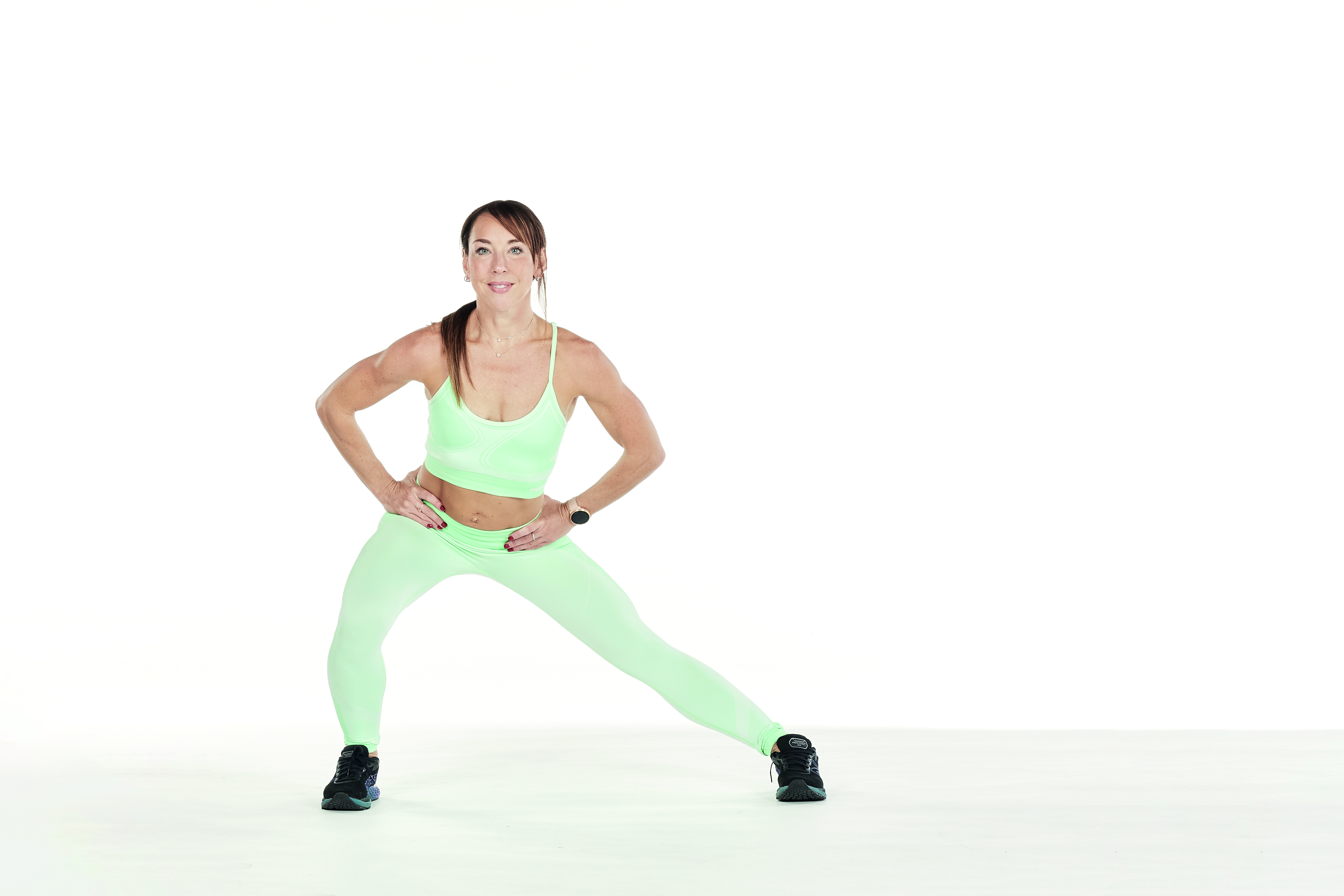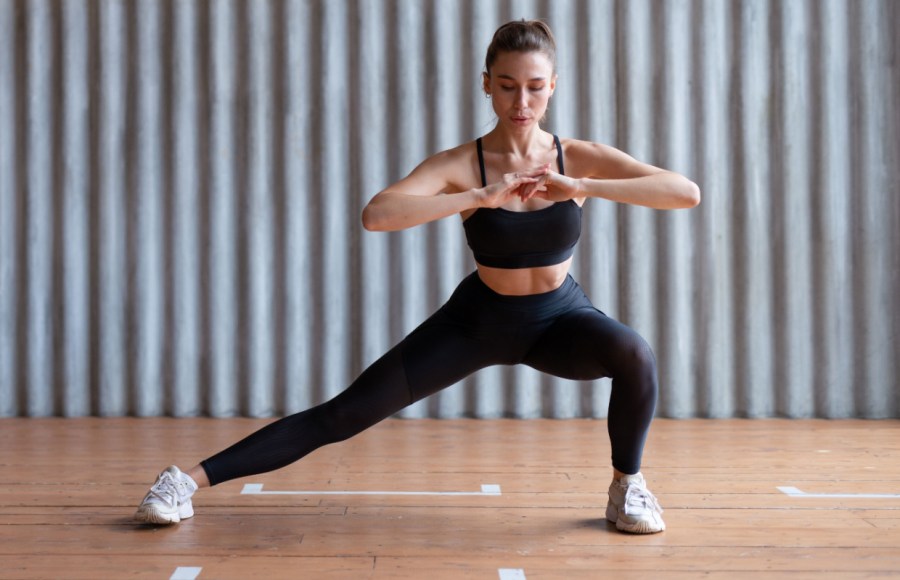Step to the side, because lateral lunges not only strengthen your legs but also improve the flexibility of your entire lower body – here’s how to do them with correct form…
Wondering why you should add lateral lunges to your exercise repertoire? ‘The lateral lunge is one of the most effective moves you can do to target the inner thigh muscles [the adductors] and glutes,’ explains Jack Claxton, level 3 PT and personal training ambassador at David Lloyd Clubs.
‘It’s also a great move to help with your mobility and balance, because stepping out to the side will take you out of your comfort zone and encourage you to work in a different plane of motion – just think how many moves you perform forwards and backwards, and up and down!’
It’s also great to do if you want to test one side of the body at a time. ‘The side lunge is a unilateral [single-limb] movement that works through the frontal plane,’ says Claxton. ‘This makes it a super functional move to help with injury prevention and stability.’ Here’s all you need to know to perform lateral lunges perfectly.

How to do lateral lunges with correct form:
- Stand tall with your feet hip-width apart and toes pointed forward. Place your hands on your hips.
- Keeping your core engaged, back flat, right leg straight and upper body facing forward, take a large step out to your left with your left foot. Bend your left knee and lower your body until your left thigh is parallel to the floor.
- Reverse the movement to return to the standing position. Repeat, this time stepping out to your right. Continue alternating sides with each rep.
Top tips for perfect form:
- As you lean into the side lunge, you’re giving your adductors and groin a good stretch. The further you take your leg out and push your hips back, the more you’ll feel it.
- Go low as you push your hips back, and be sure to push through the heel of your static leg to work that side of the glute, too.
- If you’re struggling to keep your heels on the floor, don’t be afraid to shorten your stride. Good form will make sure all the right muscles are being worked and take pressure off your knees.
- Your feet will want to naturally turn outwards, but focus on facing them forwards to help keep your hips and body square.
- Keep your trunk upright and chest up. You can hold a dumbbell by your chest to help encourage this, which will increase the intensity as well.
Model and words: Lucy Miller | Photography: Eddie Macdonald | Clothing: Twill Active Recycled Colour Block Body Fit Leggings, £35, and Seamless Sports Bra, £30; New Balance Fresh Foam 880v11 GTX (£140); Simply Trainer Socks (£12)







